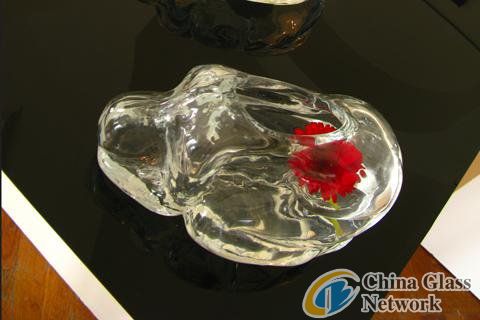Post Time:Jun 03,2011Classify:Industry NewsView:518

The weight of tradition and time hangs heavy on the secondary school in Kamenicky Senov and the glass-cutting program that celebrated a century of existence just last year.
"Forty-five years I've worked in glass," said Frantisek Janak, vice director at the school, as he led two visitors on a late Friday afternoon tour. "Out of sixty," he adds after a pause.
The school, in fact, formed Janaks career, beginning when he left home at the age of 15 to come study at Kamenicky Senov and nurse a desire to work with glass borne of his habit of drawing. Today, Janak speaks for the school he returned to later in life, to anyone who will listen, in order to make sure the institution survives and, by extension, sustains and feeds the larger Czech glass-making industry.
"Generations and generations have been making glass, so I don't think the industry can disappear very quickly, but if we don't care about it or the educational support for it, it can," he said. "I'm optimistic about the future. If we can really keep up a good quality of education, then we can do it. Therefore, I fight hard for the survival of this school; I strongly believe without good-quality schools, [the industry] will go down."
Last spring, regional authorities considered a proposal to close the school. Attendance was down dramatically, and state funding is awarded on a per-student basis. Out of 90 seats for this year's class, only 60 are filled. A decline in interest in glass also forced the school to integrate its glass-cutting and engraving programs.
Janak mobilized and created a petition to keep its doors open. In January of this year, Education Minister Josef Dobes visited the school, declaring his intent to designate the school with the "family silver" label, which would put the institution under the responsibility of the Education Ministry, rather than the regional government, and secure its future, according to Janak. A decision is expected by September.
"We have real trouble at the moment with a shortage of good, quality craftsmen. We lack good blowers, engravers and cutters," Janak said. "And politicians were planning to close down this school. It's unbelievable."
In the Czech Republic, like in the rest of Europe, declining birth rates mean smaller class sizes, especially in schools like Kamenicky Senov that focus on traditional crafts.
The Czech Republic has nearly 80 secondary schools that focus on the arts, and four prestigious ones for glass, a high supply compared with other countries, according to Rony Plesl, head of the glass department at the Academy of Arts, Architecture and Design in Prague. He supports the Kamenicky Senov school but acknowledges that schools that used to produce the work force for huge factories may have to adjust as the industry has shrunk.
A 1984 graduate of the Zelezny Brod school, Plesl returned in 1991 and taught for nine years.
"I understand exactly the problems in the high schools and universities," he told The Prague Post. "We have four glass high schools. ... In Germany, they have one prestigious glass high school. Our glass high schools under the communist system were closely tied to mass production of glassmaking. But now the situation is different; now we need small workshops and very special collections."
Plesl, like Janak, began working with glass when he was 15 and is similarly optimistic about its future, which he says lies with the small, handmade workshops that are slowly but steadily growing.
On June 2, the Rony Plesl studio will open its "Transparency Nation" exhibit at the DOX gallery, featuring Plesl's pieces as well as others who work in his studio. Plesl hopes glass will become a mainstream medium for galleries and art collectors.
"I think DOX is one of the best galleries in the Czech Republic, and I hope when people see this exhibition they see glass as quality modern art, and not just nice glass objects. This is about good works of art," Plesl said.
Educators and artists have found a future in preserving the craft of glassmaking through art, which transcends simple crystal bowls and cups. At Kamenicky Senov, Janak takes a quick walk down the quiet road to a building that hosts the Glass Museum. Inside, he proudly shows an exhibition of graduating glass students. Works include crystal, hollow female forms that hold water, floating flowers and brilliant, purple-hued geometric glass lamps.
"We must have these high standards, because the Asian countries can copy anything and make things very quickly and very cheaply," he said. "This is what will save Europe: good-quality, handmade products, bright minds and good-quality education and knowledge."
Source: http://www.praguepost.comAuthor: shangyi
PrevCarlex Brings Stability to Nashville Glass Plant
Guardian’s DiamondGuard High Endurance Glass Line to be Featured at NeoConNext